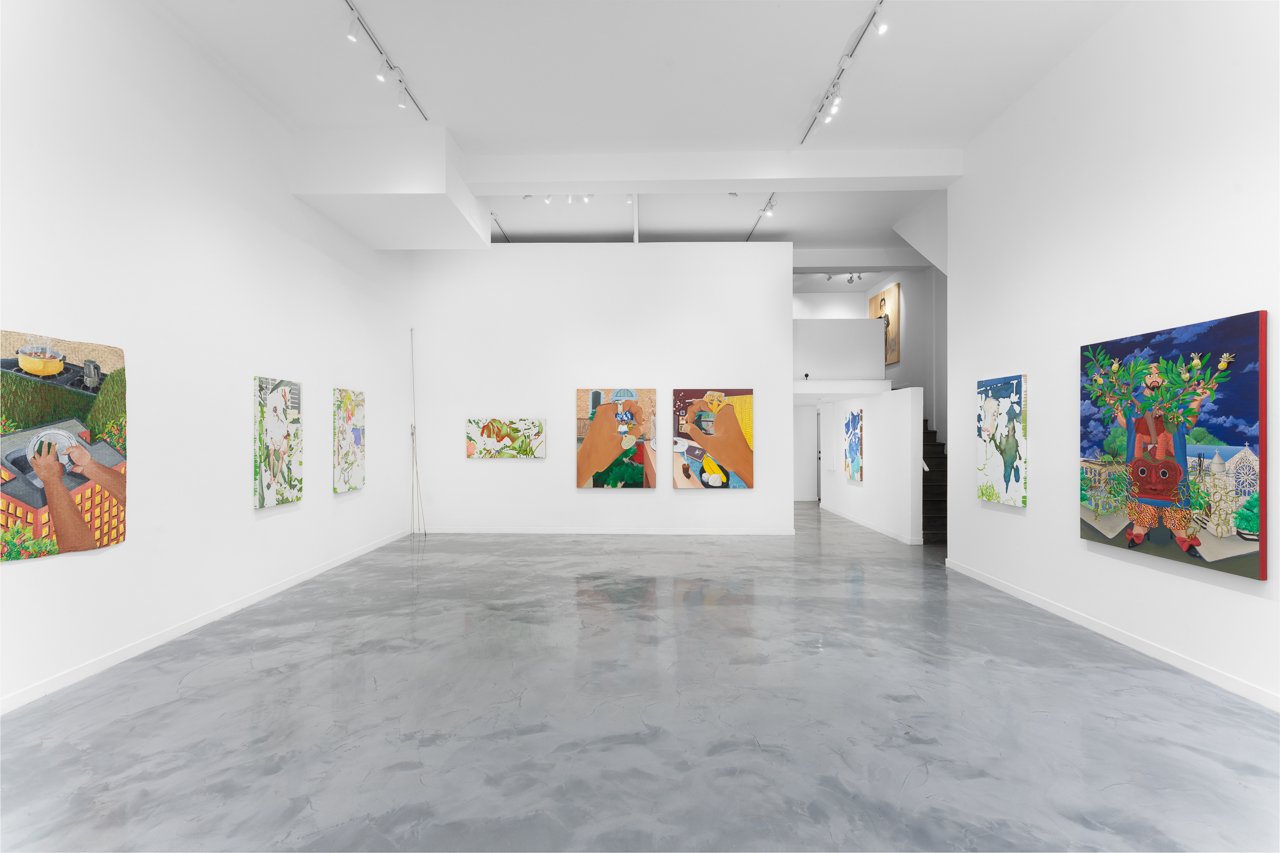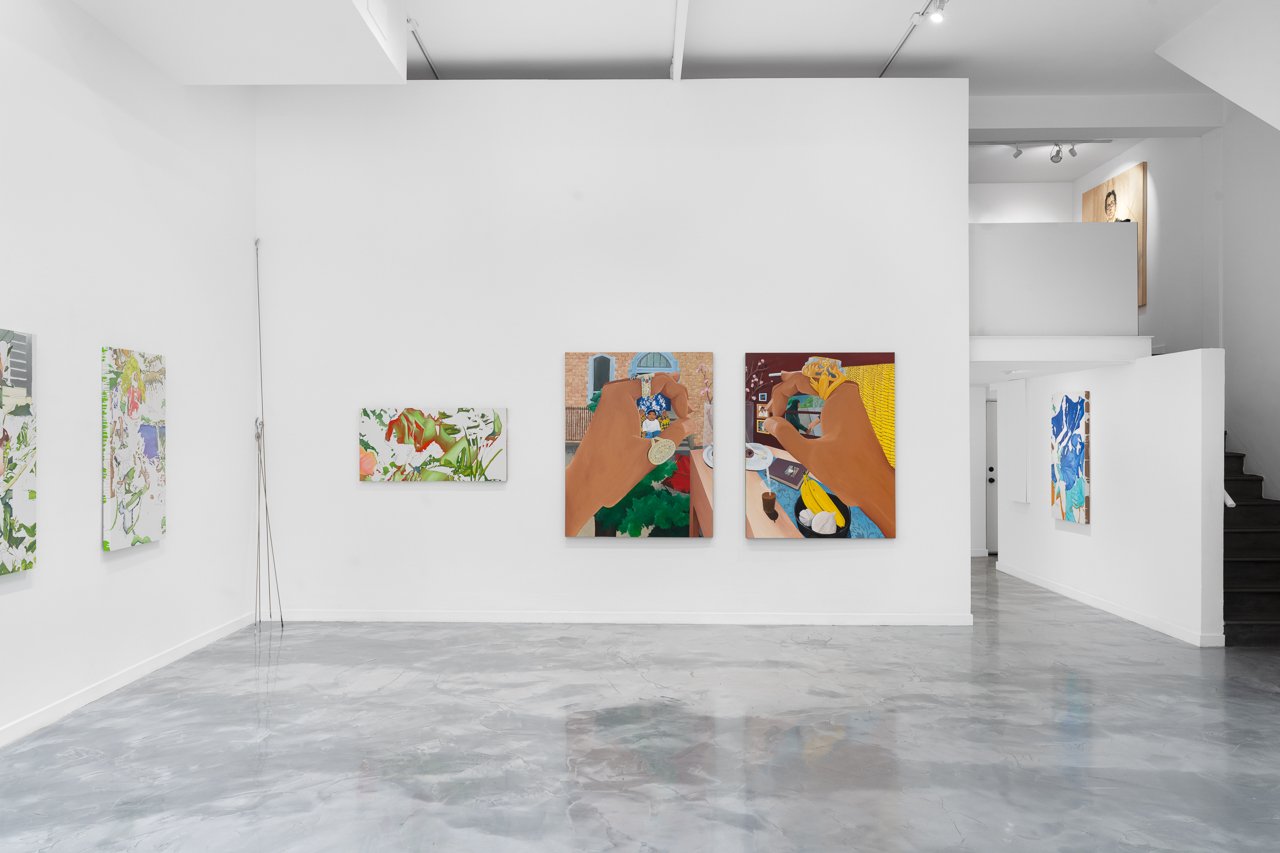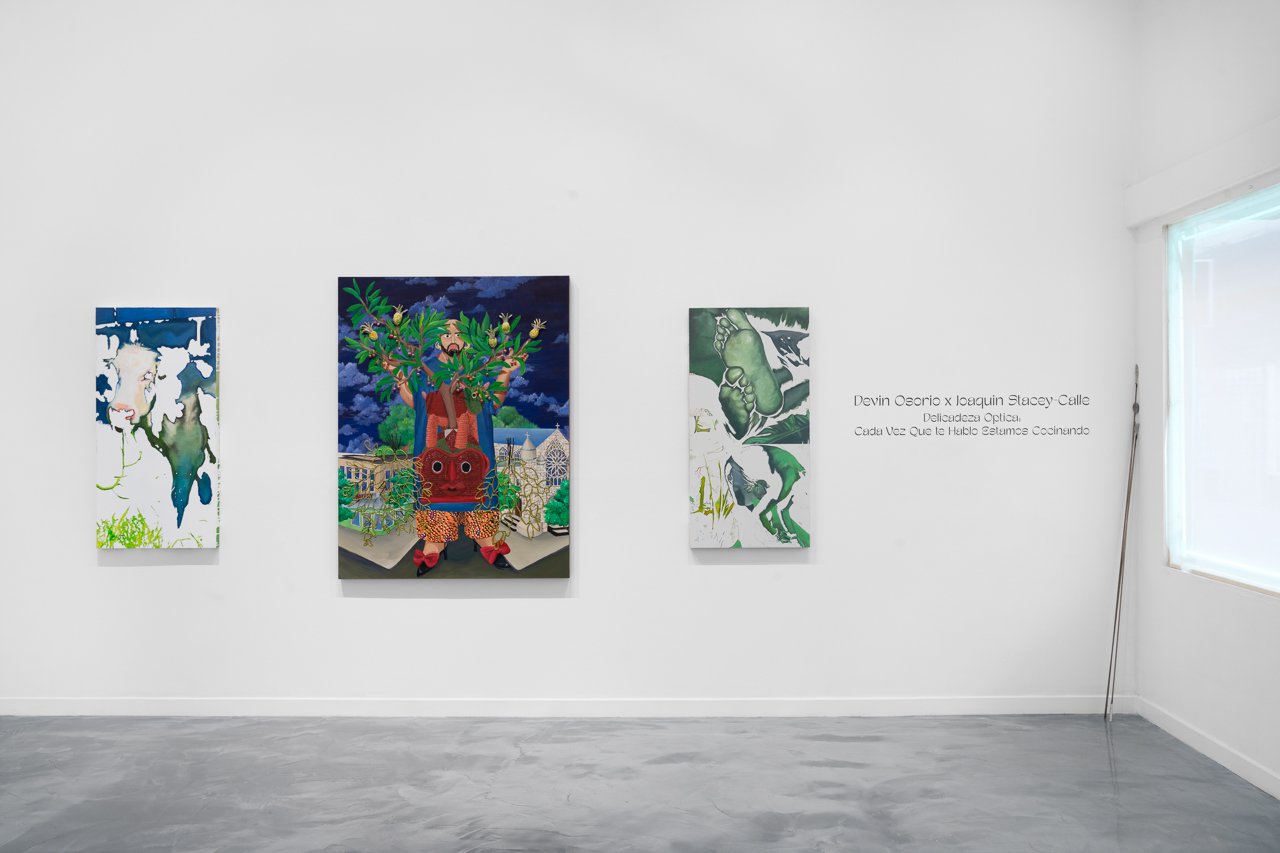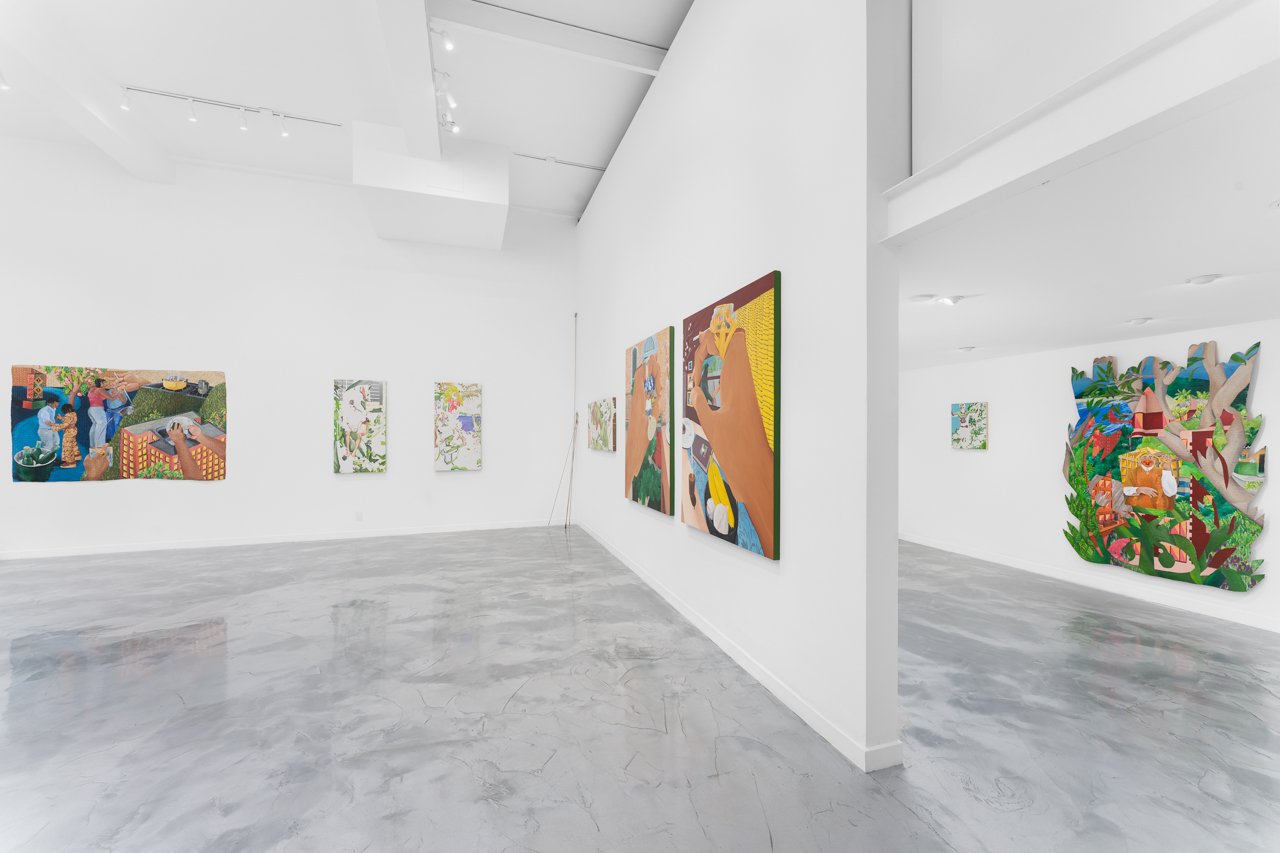Delicadeza Optica
Devin Osorio & Joaquín Stacey-Calle
Delicadeza Óptica: Cada Vez Que te Hablo Estamos Cocinando
Curated by Ever Velasquez
969 chung king road
march 16 - april 20, 2024
OPENING RECEPTION: MARcH 16, 6-9pm
SHOW CATALOG (PDF)
PRESS RELEASE (PDF)
Charlie James Gallery is pleased to present Delicadeza Óptica: Cada Vez Que te Hablo Estamos Cocinando, featuring the work of Devin Osorio and Joaquín Stacey-Calle, curated by Ever Velasquez. Both artists play with ideas of presence and absence, alternately revealing and concealing details that speak to their interest in history, community, and care. Both use imagery from the natural world, calling upon complex histories of growth, healing, and decay. Distinct in vision and execution, these two bodies of work together offer intimate glimpses into unique and singular worlds conjured within the space of the paintings.
Osorio draws upon the Dominican culture and folklore that formed an integral part of their Washington Heights upbringing. They tell personal narratives by inserting their own likeness into compositions infused with magical realism, relating complex histories in moving, fantastical scenes that are grounded in experience and memory. Soy Arbol do Muchos Frutos powerfully accomplishes this transmutation between one’s physical form and one’s communal and ancestral heritage. The central figure, a self-portrait, stares straight out at the viewer, palms up as if to receive heavenly gifts. A lush tree sprouts from their center and grows both pineapples and cherries – three-dimensional ceramic objects that have been affixed to the canvas. The idea of hybridity recurs in Osorio’s work, teasing out the complexities of being the child of immigrants and the ways that a new land can nurture this hybrid sense of self.
Stacey-Calle’s lyrical Controlled decay (intimacy of strangers) series employs anonymous bodies, their images often cropped or partially withheld, in spare paintings that merge figuration and abstraction. His compositional sense is a poetic dance of revelation and obscuration, one born of a fascination with the naturally occurring growth patterns of lichens and the natural world’s various processes of decay. He pays particular attention to shadow, in that all deeper colors have been removed from view, leaving behind pale, mysterious landscapes that feel like they are the remnants of a slowly decomposing surface.
Both Osorio and Stacey-Calle play with scale. Bodies commingle with outsized flora in Stacey-Calle’s paintings; they are dwarfed by clusters of fruits and fanned tropical leaves, or perhaps floating through the microscopic world of algae and fungi. Likewise, Osorio positions figures, plants, and architecture on equal footing in works such as Medicina de Amor. This painting on woven palm – a new medium for Osorio – is an ode to care and healing, using the meticulous preparation of homebrewed teas as a manifestation of familial love. The curving Hudson River, towering apartment buildings, and lush riverside hilltops support the dancing couples of a Washington Heights block party but also the sink and burners of a humble kitchen, merging interior and exterior and collapsing multiple points of view.
Osorio continues this theme of healing through libation in three paintings in the shape of small, beaded pouches traditionally meant to hold blessings or spells. Each embodies a particular healing concoction, tea, or cocktail that is meant to sustain a loved one. The image of the Dominican figure Santa Marta la Dominadora has been embroidered onto the pouch and recurs elsewhere across this body of work wielding a snake and riding a turtle. She is the Catholicized reincarnation of Mami Wata, her dual nature an embodiment of colonialism’s legacy in the Caribbean. Stacey-Calle focuses on the healing nature of remembrance and forgetting, the essential holding close and letting go of details and histories. Of course, knowledge that is recorded and that which is omitted from history has a political weight, one deeply tied to the colonialist project. Stacey-Calle’s tender paintings seem to reach back into memory via a dreamspace of forgotten details, suggesting that the way forward may necessitate a looking back.
Devin Osorio (1993) is a multi-disciplinary artist based in the Lower East Side, New York City. Using shared and self-reflective symbolism, Osorio honors Dominican culture through shrine-like paintings that incorporate plants, animals and glyphs to create a visual vernacular of and for the Dominican American community. Osorio’s work has been exhibited in New York, Atlanta, Los Angeles, London, Miami, Mexico City, and Madrid, at galleries including Calderón Gallery, Wave Hill, The AHL Foundation, REGULARNORMAL, Sotheby’s Institute of the Arts, Adhesivo Contemporary and Charlie James Gallery. Osorio has been included in auctions with the Bronx Museum of the Arts and El Museo del Barrio. Osorio earned a BFA from Savannah College of Art and Design.
Joaquín Stacey-Calle (he/him, b.2000, Quito, Ecuador) is an interdisciplinary artist working with painting, performance, installation, microbes, photography, textiles, and food. He graduated with a BFA from Florida International University in 2022 and is currently an MFA candidate at Otis College of Art and Design (CA), expecting to graduate in 2024. Stacey-Calle develops conversations around history, identity, memory, representational and landscape painting, daily rituals, Western ontology, and the human condition. He is interested in the digestion and fermentation of his quotidian surroundings and the cultural productions he has consumed throughout his life. Like his understanding of his diasporic self, his work is rooted in memories of his home and life in Ecuador, Miami, and Los Angeles and then tethered to a new experience of unfixed imagery and materiality that remains ever-changing. Lately, he has been exploring the importance of forgetting, confusion, and ignorance concerning the definition of thought. He has exhibited throughout Miami and LA, in places like Goodmother Gallery, The Laundromat Art Space, Bernice Steinbaum Gallery, Pinecrest Gardens Gallery, Ateliê Alê (São Paulo), and the Ecuadoran Consulate in Miami. Stacey-Calle was part of the 2022 & 2023 Summer Open, a residency hosted by The Bakehouse Art Complex in Miami. He is part of the artist collective Comedor Azul with Amaris Cruz-Guerrero and Leslie Gomez-Gonzalez. In March, he will have a two-person show at Charlie James Gallery, and an individual project with Proxy Gallery in April.






